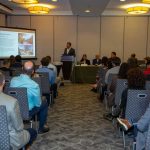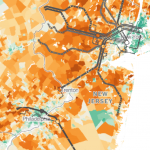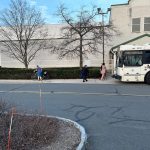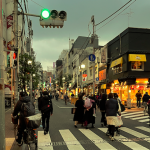New Jersey Future Blog
Demonstration Projects: Seeing is Believing—Doing is Achieving
July 8th, 2022 by Patricia Dunkak
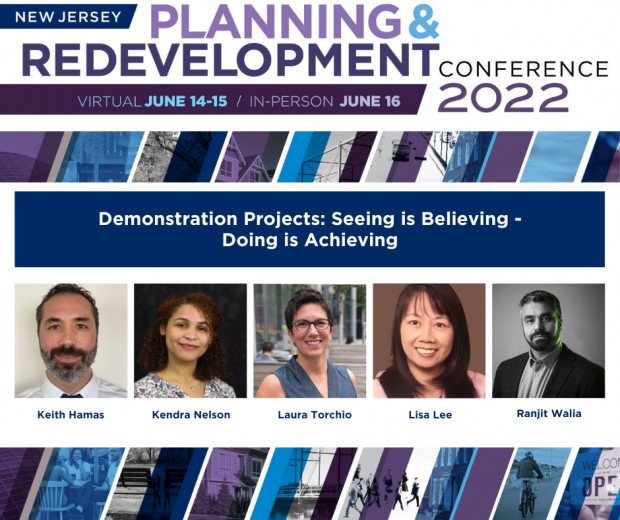 “Streets make-up up to 80% of every communities’ public space. What if we start to think of streets as places for people, as well as places to move and store cars?” Moderator Laura Torchio of NV5 asked viewers to consider streets as places during the 2022 NJ Planning and Redevelopment Conference. For large design projects that alter current transportation design and systems, oftentimes the largest obstacle is public resistance to change in current habits. The session, Demonstration Projects: Seeing is Believing – Doing is Achieving, explored how demonstration projects in three New Jersey municipalities can lead to long-term design solutions that reduce vehicle miles traveled, increase transportation options, promote economic growth through infrastructure investments, and create better public spaces for all users.
“Streets make-up up to 80% of every communities’ public space. What if we start to think of streets as places for people, as well as places to move and store cars?” Moderator Laura Torchio of NV5 asked viewers to consider streets as places during the 2022 NJ Planning and Redevelopment Conference. For large design projects that alter current transportation design and systems, oftentimes the largest obstacle is public resistance to change in current habits. The session, Demonstration Projects: Seeing is Believing – Doing is Achieving, explored how demonstration projects in three New Jersey municipalities can lead to long-term design solutions that reduce vehicle miles traveled, increase transportation options, promote economic growth through infrastructure investments, and create better public spaces for all users.
Demonstration projects are short-term, low-cost, temporary projects used to pilot long-term design solutions that can improve transportation options for all users and upgrade public spaces. This concept of “try before you buy” creates an opportunity for public participation in transportation projects, which can reduce resistance to new designs. Temporary projects are non-threatening to a community’s current system and habits, and often lead to permanent projects supported by the community. The breakout session panel explored case studies and examples of successful demonstration projects—also known as tactical urbanism—that created more complete streets designed for all pedestrians, cyclists, and drivers.
Public engagement assists planners in making informed decisions for complete streets projects. Keith Hamas of the North Jersey Transportation Planning Authority explained how Keyport Borough in Monmouth County used a virtual video game style system that allowed for survey participants to rate their streets and provide feedback on bike networks, access to schools, and stormwater management. Feedback from this outreach plan led to a selection of a high profile location that would generate enthusiasm for walkers and cyclists, while addressing a safety issue that exemplifies a complete street design. Ultimately, this temporary bike lane improved accessibility and showcased the benefits of safe crossing trails and enhancing a public space for non-drivers.
Experimental Pop-Ups are a new initiative organized by the Delaware Valley Regional Planning Commission to help communities plan and execute tactical urbanism, including bike lanes and traffic circles. Kendra Nelson of DVRPC highlighted various stakeholder groups that played a pivotal role in executing an Experimental Pop-Up plan in Collingswood. The township indicated interest in providing bike lanes to increase bike passing distance and reduce vehicle speed. The materials for this pop-up design only cost around $10,000, and displayed to Collingswood cyclists and drivers the benefits of what a similar long-term design project would look like.
West Orange is an example of how a demonstration project can generate community support for a long term complete streets design project. EZ Ride’s Lisa Lee informed participants of a bike lane project that garnered awareness and support among schools and community groups in West Orange. Feedback from this demonstration project proved that a bike lane would benefit not just cyclists, but community members of all ages. Through an innovative promotional campaign sharing messages stating “Share the Road” and township installed electric signs noting the change in traffic patterns, West Orange cyclists and drivers experienced a shift in how they viewed transportation options in their town. This gradual shift was non-threatening to the community, as it did not change their streets overnight. This low-cost, temporary bike lane helped stakeholders develop and create a long-term design based on community feedback. This short-term project’s success piloted a permanent bike lane for all users.
All panelists in this session emphasized the importance of public engagement during the demonstration project case studies described in New Jersey. The short-term, low-cost, temporary projects can be used as examples for long term design solutions that shift the makeup of public spaces. These types of projects that allow the community to test an idea before they invest can improve design elements based on public participation. Through collaborative demonstration projects, communities can shift perceptions on transportation and how a complete street should look. These projects can lead to more equitable downtown centers, increase transportation options, promote economic growth through infrastructure investments, and reduce vehicle miles traveled.
Related Posts
Tags: community, Complete Streets, conference, public transportation, streets, Transportation

